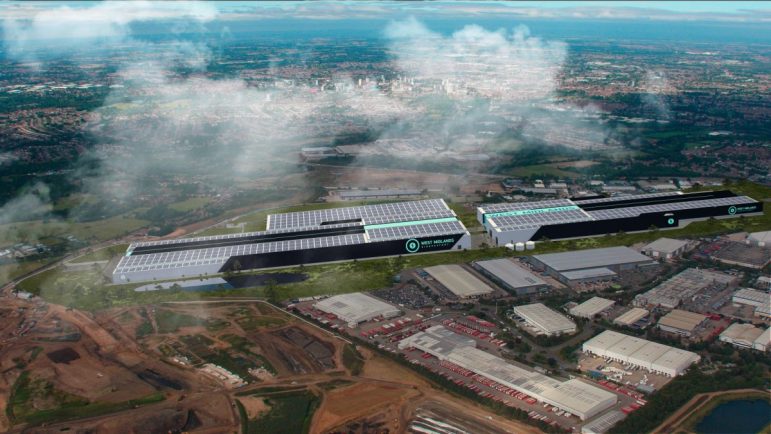WARWICK District Council has tonight given outline planning permission to controversial plans for a gigafactory on the site of Coventry Airport.
After a four-hour meeting, featuring a presentation, speeches, questions and debate, the proposals were backed by a majority.
The application, due to go before Coventry City Council on Thursday, is for a battery manufacturing centre with battery recycling, car parking, landscaping and road access.
The gigafactory – in the green belt and covering nearly 80 hectares, the equivalent of around 150 football pitches – was brought forward by several organisations, including Coventry City Council, Coventry Airport Ltd and the West Midlands Combined Authority.
They claimed it would create 6,000 highly skilled and well paid jobs operating it, along with construction positions to build it. They added it would also support 7,700 jobs in the automotive and components industry and 3,400 in goods and services.
They warned without a gigafactory the West Midlands Automotive sector would collapse and jobs would be taken elsewhere by the firms which needed the batteries.
Campaigners, including Save Coventry Airport and companies currently at the Baginton site, said there were plenty of more suitable sites in the West Midlands which could be used for a gigafactory – a claim denied by the applicants.

The biggest argument by many of the speakers tonight was that there was no ‘end user’ in place for the £2.5billion gigafactory which required that investment to be found.
Baginton Parish Council – among the objectors – spoke about it having no operator, along with the impact on the green belt and health and safety concerns for residents in the nearby village.
It was stated many gigafactories were ‘in the middle of nowhere’, such as in a desert in Nevada or in the Brandenburg Forest in Germany and not close to residential areas, as it was ‘effectively a chemical plant’ with dangers of explosions and fires which could not be extinguished and would have to be ‘left to burn out’.
But others argued one in Buffalo was four miles from the Buffalo City centre and Britain’s first one in Blyth was also not in a remote area.
Campaigners against the scheme, including an aviation company spokesperson and pilot, accused the Rigby Group which owns Coventry Airport of ‘running it down’ to make it unviable.
They said Coventry Airport was, along with others, an important part of the UK’s aviation network and needed to be protected as it bridged the gap and linked bigger commercial airports, such as Birmingham International with smaller airfields.
They added the plans were contrary to the sections of the National Planning Policy Framework (NPPF) on aviation, as well as the green belt.
As a fantastic training ground for future pilots, air traffic control, air crew and other highly skilled jobs, it needed to remain and with investment could thrive and be an important part of the quickly progressive future of aviation.
At the other end of the scale, Mark Hooton, responsible of the historic and rare Vampire jet based at Coventry Airport, said there was a danger an important part of British aviation history could be lost for future generations.
The spokesperson for the applicants denied Coventry Airport was viable and said other airports owned by The Rigby Group – in Norwich and Bournemouth – were and the company had invested in them.
As well as helping provide nearby infrastructure, it was stated Section 106 agreements would also help businesses based at Coventry Airport to relocate to safeguard the jobs.
But the firms – many which chose Coventry Airport because of the facilities and runways available there – have previously rubbished this with many expressing fear for their futures.
Councillors were told it was not legally possible for a condition to be added to keep the airport open until an confirmed operator for the gigafactory was found and Coventry Airport ‘could be closed tomorrow’ if that decision was taken by its owners.
Instead they added it ‘as a note’ which was a request and not enforceable.
After the vote by Warwick District Council, specialist aviation and aerospace consultants based at Coventry Airport, Sky Harbour UK, said a ‘dangerous precedent had been set’ and the ‘green light had now been given to speculative property developers for the nation’s airports.
The company’s CEO Steve Ford added: “Speculative property development, often with no defined end user is not limited to Coventry Airport but is evident across the entire country.
“In successfully obtaining planning permission for a ‘ghost factory’ by the applicants, overnight Coventry City`s airport that defended it in its hour of need, has been turned into a ‘ghost town’ – a legacy that neither Warwick District Council, Coventry City Council or the Coventry and Warwickshire Local Enterprise Partnership (LEP) should take pride in.”











